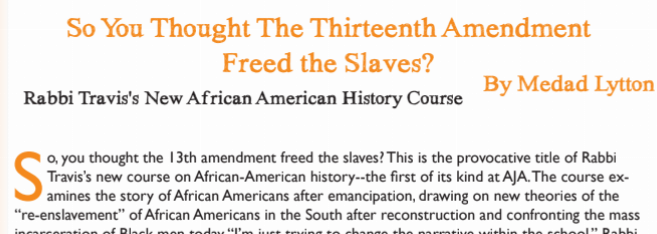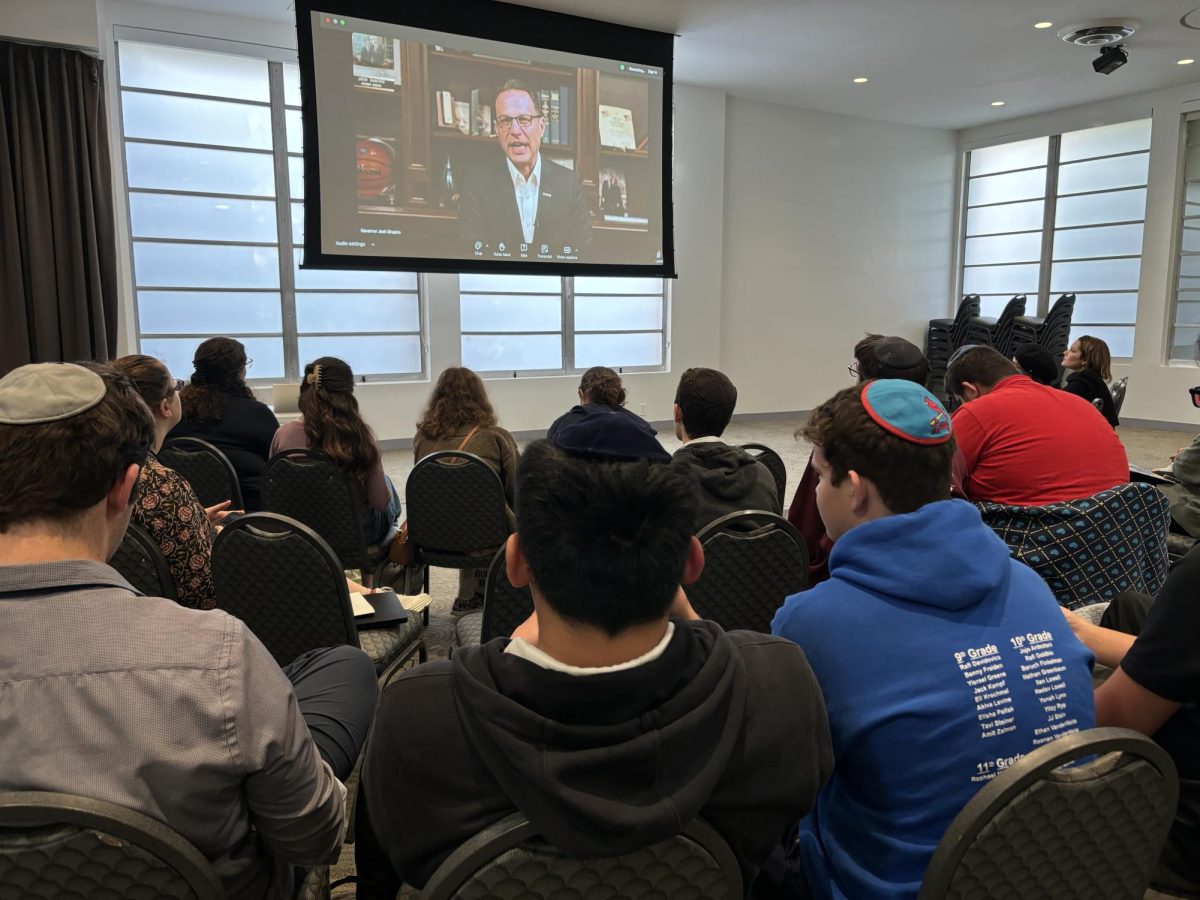So, you thought the 13th amendment freed the slaves? This is the provocative title of Rabbi
Travis’s new course on African-American history–the first of its kind at AJA. The course ex-
amines the story of African Americans after emancipation, drawing on new theories of the“re-enslavement” of African Americans in the South after reconstruction and confronting the mass
incarceration of Black men today. “I’m just trying to change the narrative within the school,” Rabbi Travis explained to me in a recent interview. Through the class, Rabbi Travis hopes to “bust myths” and uproot many of the biases and misconceptions that he feels are prevalent.
Rabbi Travis worries that we, in the AJA community, live in a bubble. He recalls his daughter, a graduate of Yeshiva Atlanta, pointing out to him that their family “had never been in a black person’s home before.” Rabbi Travis sees this reality as a product of the insular community in which we live. “We live in a bubble, most of us live in orthodox Jewish neighborhoods and we only interact with other orthodox Jews who tend to be white and very much like us,” he says.
In Rabbi Travis’s experience, this insularity can breed bias and misinformation. Rabbi Travis explains that because of the lack of contact with African Americans, students are left to “draw conclusions [about African Americans] based on what we read online, see in TV shows, or music
or movies,” conclusions that Rabbi Travis feels are often out of context or inaccurate. He told, “My
sense is that many [students] only view black culture through the filter of rap music and sports.” In the past, Rabbi Travis has sometimes heard students make disparaging comments about people of color which has on occasion prompted him to turn to students and ask, “Do you know any people of color?
”
This class is an example of Rabbi Travis’s broader mission when teaching history; to instill in
his students a “passion for history and busting myths.” Rabbi Travis thinks African American history has long been mistaught and whitewashed. Through the class, he wants to help students confront the systematic suppression of African American civil rights in the South since the civil war. He wants to talk about institutions such as the convict leasing system, a major focus of Douglas A. Blackmon’s Slavery by Another Name (published in 2008). In the book, Blackmon exposes a how the criminal justice system in the South after the civil war was used to essentially re-enslave thousands of African American men. Blackmon in his research uncovered many primary records previously unavailable that detail the convict leasing system. By using the book in his class, Rabbi Travis is teaching history that simply wasn’t taught in the past and revealing the true depth of institutional racism.
Past experience teaching American history has taught Rabbi Travis that many students don’t
fully understand the racist institutions used to limit African American social mobility in the wake
of the civil war. For example, he has often been asked by students, “Why the the black community
wait[ed] until the fifties to stand up for their rights.” Through the course he hopes to answer this
question fully and leave students asking, “[How] did [African Americans] find the courage to stand
up for themselves in spite of all the odds they faced?”
Rabbi Travis said that he is “thrilled” to teach the course this year. He is excited to spend the
year helping ”change the narrative” and combating misconceptions about race. Pointing to a shout
out he got from a student about the course at Community Time, AJA’s weekly gathering, he thinks
that the class has already begun to impact students.
This story appeared in the 2018 Sukkot edition of Palette at Atlanta Jewish Academy.












